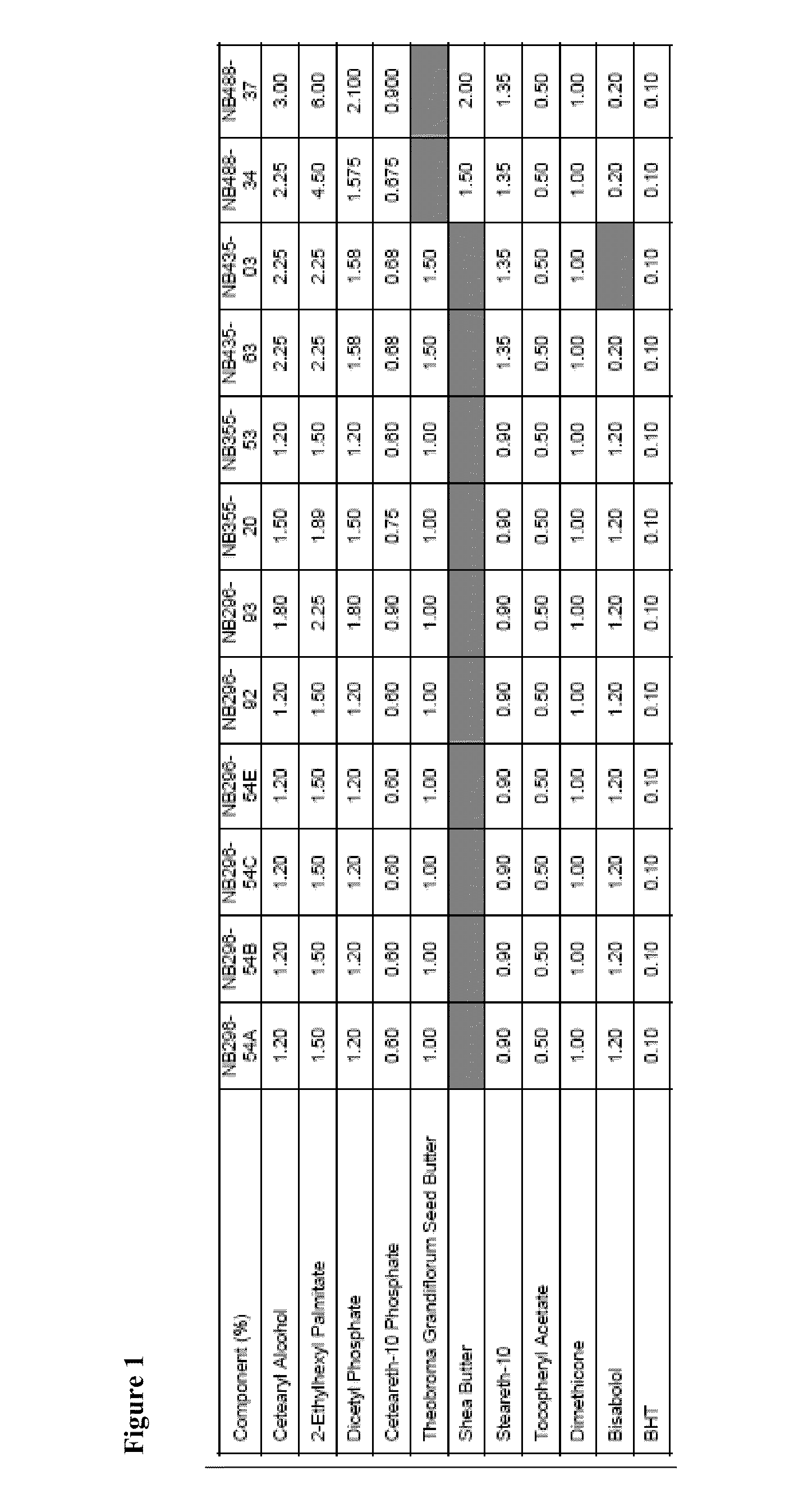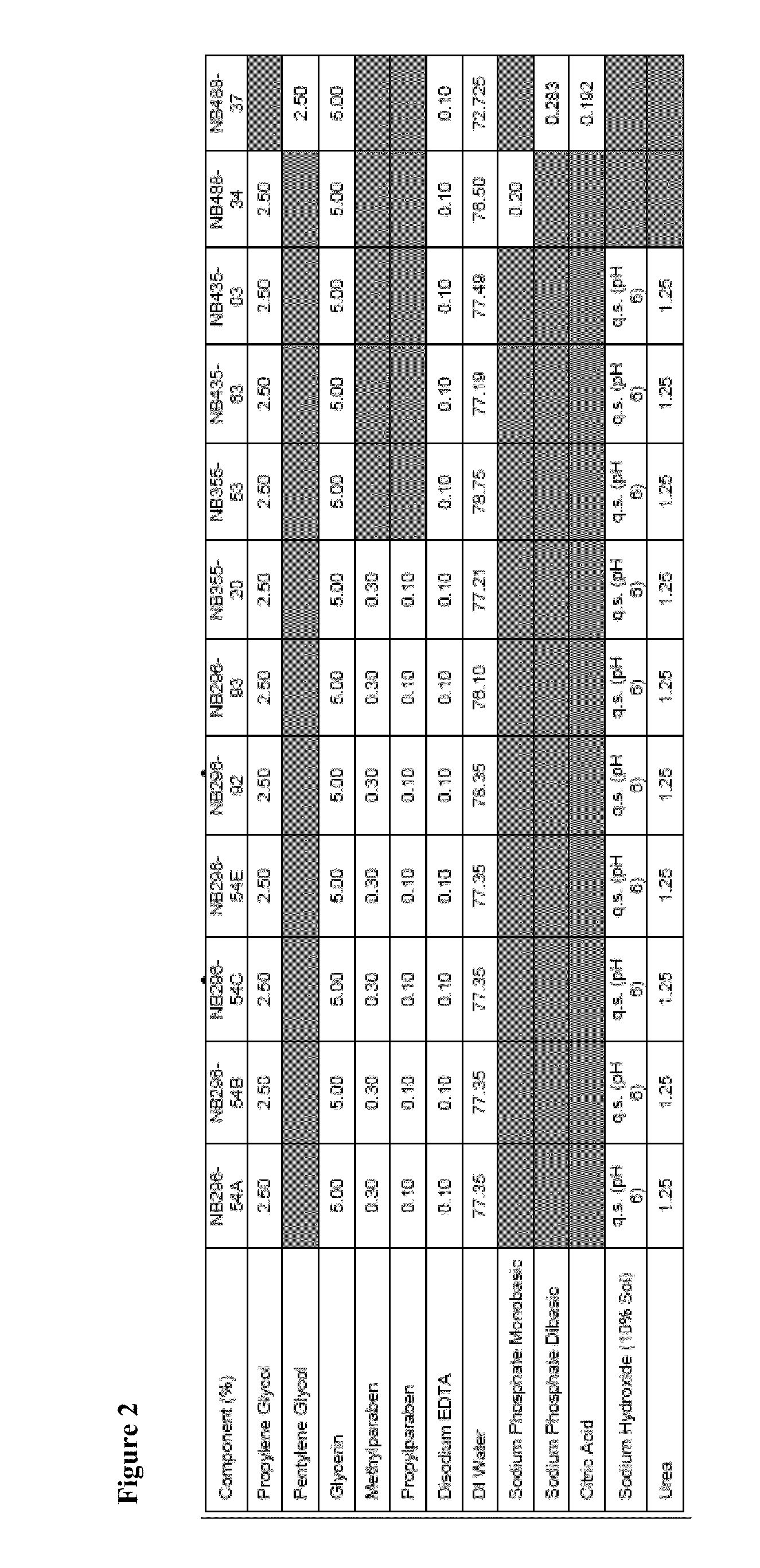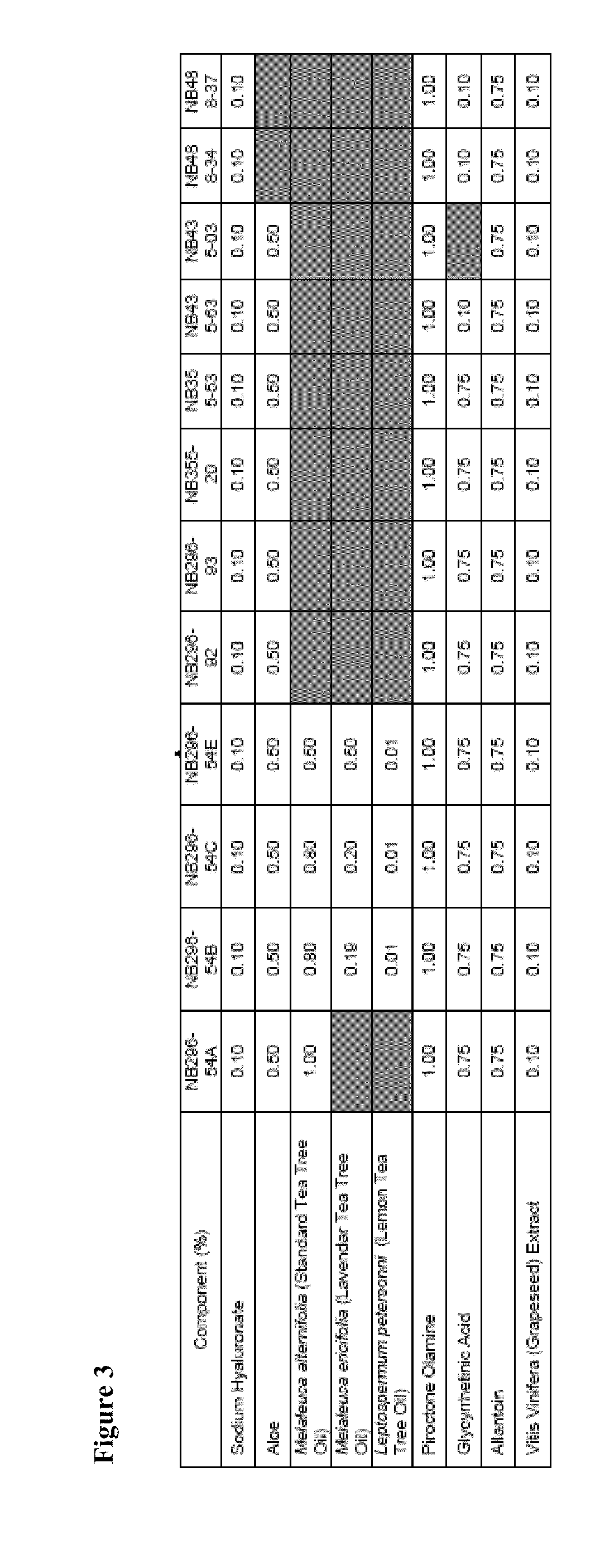Emollient foams for treatment of seborrheic dermatitis
a technology of seborrheic dermatitis and emollient foam, which is applied in the directions of aerosol delivery, emulsion delivery, medical preparations, etc., can solve the problems of increased transepidermal water loss (tewl) and exposure to environmental irritants
- Summary
- Abstract
- Description
- Claims
- Application Information
AI Technical Summary
Problems solved by technology
Method used
Image
Examples
example 1
Compositions and Method of Manufacture
[0420]An example product concentrate (NB296-54A; see FIGS. 1, 2, and 3) was manufactured using the procedure outlined below:
Part A: Oil Phase Preparation
[0421]1. Charge cetearyl alcohol, ethylhexyl palmitate, dicetyl phosphate, ceteareth-10 phosphate, Theobroma grandiflorum seed butter, steareth-10, dimethicone and butylated hydroxytoluene (BHT) into a Stainless Steel tank and heat to about 75-about 80° C.
Part B: Aqueous Phase Preparation[0422]1. Charge Deionized Water, Propylene Glycol and Glycerin (glycerol) into a second Stainless Steel tank and heat to about 75-about 80° C.[0423]2. Charge and dissolve Methylparaben, Propylparaben, Disodium EDTA and Urea while mixing.[0424]3. Continue mixing until a clear solution is obtained while maintaining a temperature of about 75-about 80° C.
Part C: Final Emulsion Formation[0425]1. Add Part A to Part B while high-shear mixing at about 75-about 80° C.[0426]2. Cool the emulsion with an outside cold-water ...
example 2
Product Densities
[0437]When dispensed from an aerosol can, the compositions of the invention form a foam. The densities of dispensed foam and non-foam medical devices intended to treat dermatoses were measured as follows.
[0438]Product was dispensed into a conical receptacle of known weight and volume. The product was dispensed into the receptacle so that there were no voids. Excess material was removed from the top of the receptacle with a flat-bladed spatula. The mass of the test article and receptacle was determined with the test article density calculated using the formula (Equation 1):
Density=(MASST−MASSR) / VOLUMER (1)
Where:[0439]MASST=total mass of test article and receptacle[0440]MASSR=mass of receptacle[0441]VOLUMER=volume of receptacle
[0442]Densities of various compositions of the invention are outlined in FIG. 4. In FIG. 4, Promiseb™ contains water, isohexadecane, butyrospermum parkii, pentylene glycol, ethylhexyl palmitate, cera alba, PEG-30 dipolyhydroxystearate, bisabolo...
example 3
Product Biocompatibility
[0443]To demonstrate the inherent biocompatibility of the compositions of the invention and their suitability for use on diseased skin, biocompatibility testing was performed with selected compositions. Test selection was made in accordance with ISO 10993 guidelines for biocompatibility testing of surface medical devices in contact with skin.
[0444]The potential of the compositions of the invention to produce primary skin irritation in New Zealand White Rabbits was determined by examining the irritation produced by a single 4 hour topical skin exposure to a composition. The allergenic potential or sensitizing capacity of the compositions of the invention were examined by the Kligman Maximization—Direct Contact test in Hartley guinea pigs. See FIG. 5.
PUM
| Property | Measurement | Unit |
|---|---|---|
| density | aaaaa | aaaaa |
| density | aaaaa | aaaaa |
| density | aaaaa | aaaaa |
Abstract
Description
Claims
Application Information
 Login to View More
Login to View More - R&D
- Intellectual Property
- Life Sciences
- Materials
- Tech Scout
- Unparalleled Data Quality
- Higher Quality Content
- 60% Fewer Hallucinations
Browse by: Latest US Patents, China's latest patents, Technical Efficacy Thesaurus, Application Domain, Technology Topic, Popular Technical Reports.
© 2025 PatSnap. All rights reserved.Legal|Privacy policy|Modern Slavery Act Transparency Statement|Sitemap|About US| Contact US: help@patsnap.com



